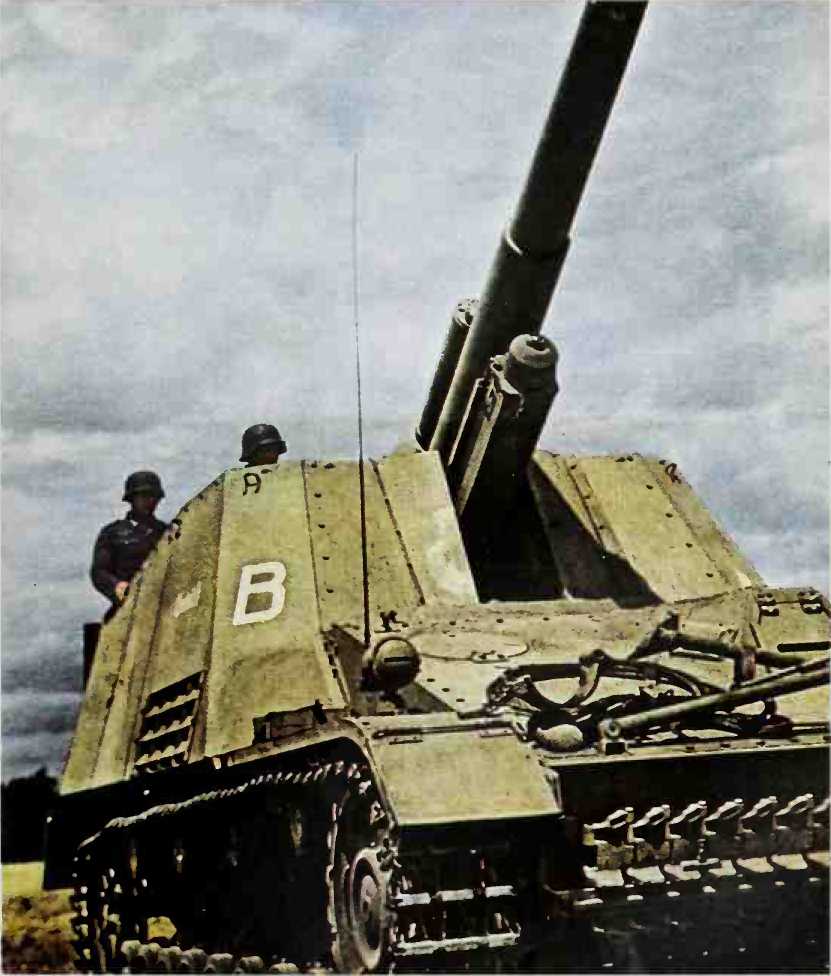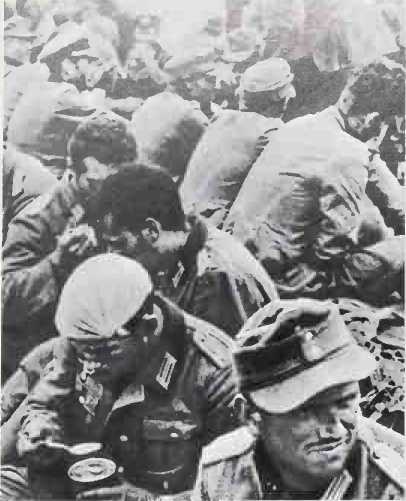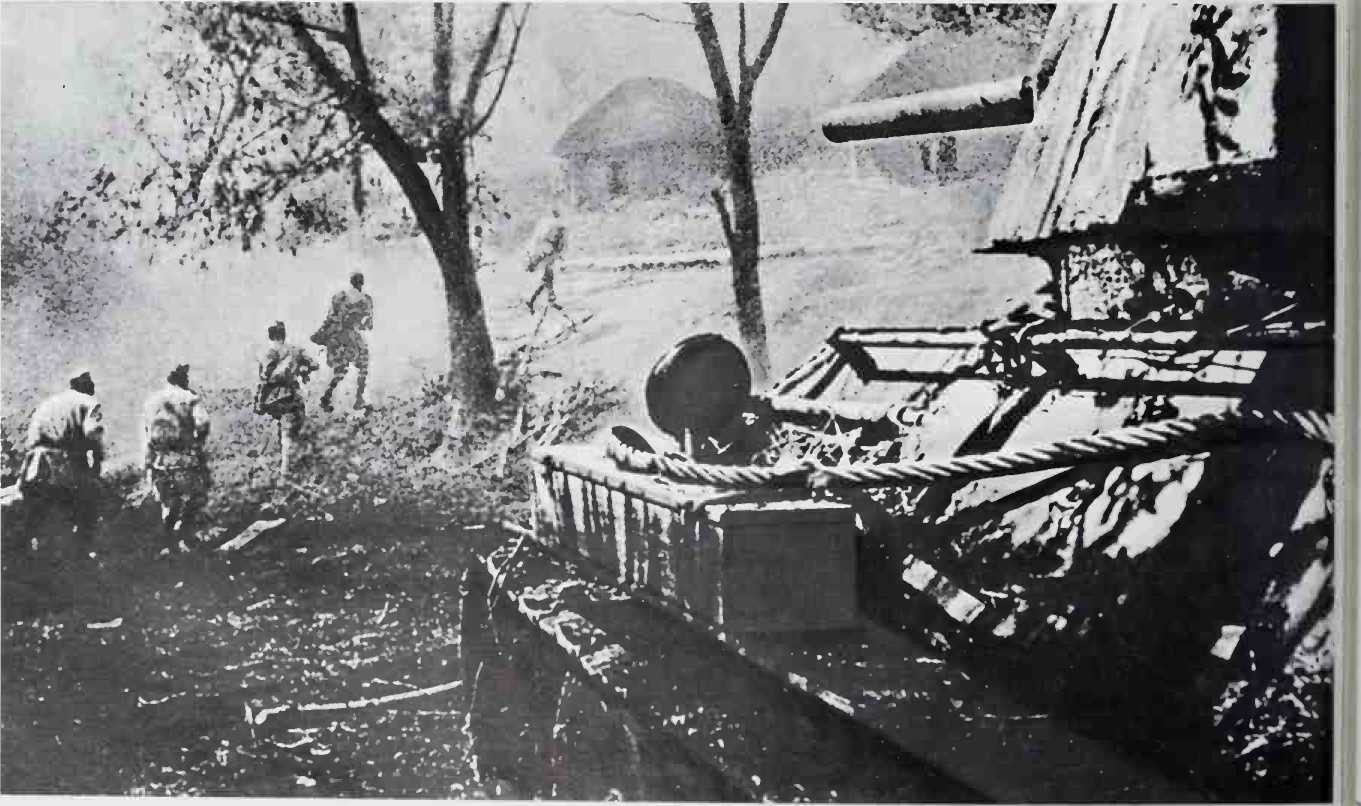The Soviet offensive of March 1944 put great pressure on the whole German line; and faced with such an overwhelming threat, Manstein did not hesitate. First, he ordered Generals Hube and Wohler to withdraw immediately; then he decided to mass his troops around General Raus to stop Zhukov taking the most threatening route across the Dniestr to the Carpathians via Chernovtsy. With his XIII Corps covering L’vov in the Brody region, he ordered XLVIII Panzer Corps, then fighting 120 miles to the east, southwest of Berdichev, to go to the defence of Tarnopol’. To carry out such an order, it first had to slip through the columns of the northbound 1st Ukrainian Front armies and do so without being engaged by the enemy. That it succeeded was due to the coolness and skill of its commander, General Balck, and also to errors committed by the Russians. Mellenthin, chief-of-staff of XLVIII Panzer Corps makes the following remark in this connection; "Since Russian attacks were nearly always aimed at large centres -probably because the Soviet generals wanted to attract attention to themselves by having their names inserted in special communiques-we avoided such centres like the plague.” Their manoeuvre was successful, and Manstein was able to ward off the catastrophe that had seemed so near, making theRussians fight for more than a month before they could enter Tarnopol’. However, it was not his responsibility to impose his views on Kleist, and he was not going to abandon his fellow-officer, just when the latter’s 6th Army was locked in battle with the 50 or 60 divisions of the 3rd and 4th Ukrainian Fronts’ armies.
At O. K.H., where the actions of the two army groups ought to have been coordinated, Hitler obstinately refused to allow the 6th Army to abandon the Bug line and strengthen Manstein’s right wing. The consequence was that on March 13 Marshal Konev had pierced the defences that the 8th Army had hastily improvised on the right bank of the Bug, and had crossed the river on a 100-mile wide front. This breakthrough cruelly exposed the right wing of the 1st Panzerarmee, whilst its left wing was also under pressure.
Ordered to Obersalzberg on March 19 to take part in a ceremony during which
Rundstedt, on behalf of his fellow officers, presented vows of loyalty to the Fiihrer, Manstein took advantage of the occasion to put his point of view: in his opinion four decisions had to be made, and quickly: "1. Immediate withdrawal of the 6th Army behind the Dniestr. The salient it occupied on the Bug was still much too pronounced and demanded too many troops for its defence. It was Kleist himself, commanding Army Group 'A’, who had proposed this;
2. The units thus freed would then be rapidly transferred to the area between the Dniestr and the Prut, preventing the 8th Army from being pushed back from the Dniestr towards the south-east;
3. Army Group 'A’ to be given the clear responsibility, in liaison with Rumanian forces, for covering Rumania on the Dniestr or the Prut; and
4. A rapid strengthening of the northern wing of Army Group 'South’, to prevent its being pushed back into the Carpathians, or to prevent a Russian advance on L’vov. ”
V More mobile artillery for the Panzer arm. This is a Hummel-”bumble-bee”- which mounted a 15-cm gun on a Pzkw IV hull. This weapon was officially classified as schwere Panzerhaubitze - ''/leauy armoured howitzer”. The 15-cm gun had been the mainstay of the German medium artillery for years.


A Jetsam of defeat: German prisoners savour Russian hospitality at ration time.
V Keeping up the momentum: Russian infantry, backed by
Armour.

But Hitler remained intractable; there were to be neither substantial reinforcements, nor freedom of manoeuvre for his generals.




 World History
World History









